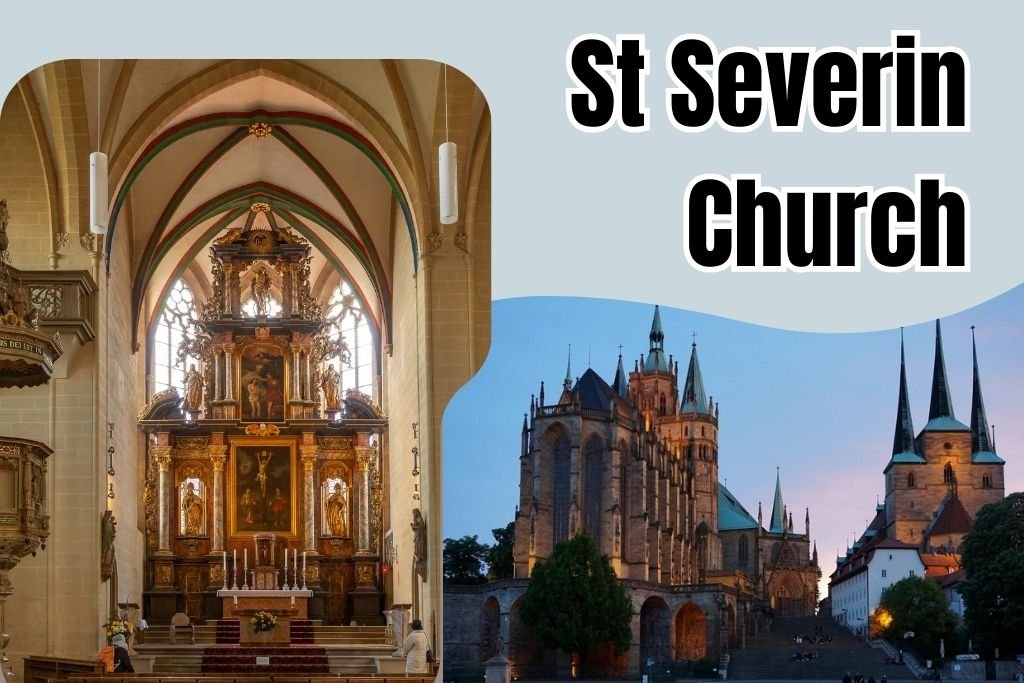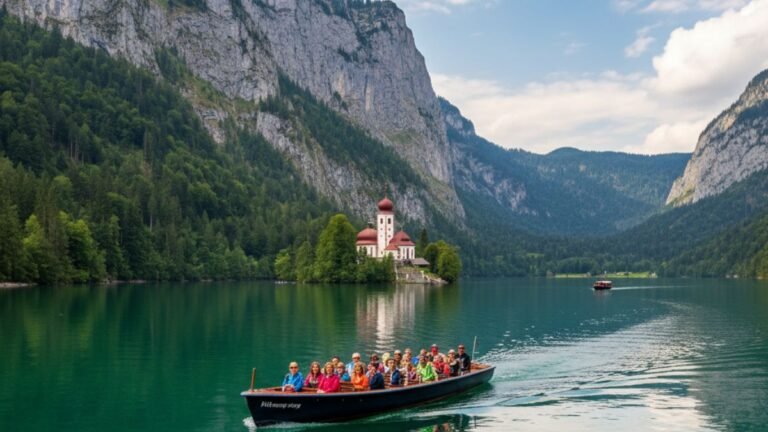St Severin Church Erfurt Travel Guide

St. Severus Church (Severikirche) in Erfurt, Germany, stands as a remarkable example of early Gothic architecture and holds significant historical and cultural value. Situated prominently on Cathedral Hill (Domberg), it forms an iconic ensemble with the adjacent St. Mary’s Cathedral, collectively dominating Erfurt’s skyline.
Architectural and Historical Overview
Early Gothic Hall Church: Constructed between the 1270s and mid-14th century, St. Severus is a five-naved hall church, a design that was innovative for its time and influenced subsequent Gothic architecture in Germany.
Relics of St. Severus: The church houses the sarcophagus of its patron, St. Severus of Ravenna. His remains were transferred to Erfurt in 836, enhancing the church’s religious significance.
Artistic Treasures:
- A 15-meter-high sandstone baptismal font from 1467, notable for its intricate design.
- A stone Madonna dating back to 1345, exemplifying Gothic sculpture.
- The sarcophagus of St. Severus, adorned with reliefs depicting scenes from the saint’s life.
Cultural Significance
St. Severus Church plays a central role in Erfurt’s cultural life. Each summer, the Cathedral Steps Theatre Festival transforms the 70 steps between St. Mary’s Cathedral and St. Severus Church into an open-air stage, hosting operas and musicals that attract visitors from around the world.
Entrance Ticket Price
- Entry to St. Severus Church is free.
Visit Schedule
- Monday to Saturday: 10:00 AM to 5:00 PM.
- Sunday: 1:00 PM to 5:00 PM.
- Official Website: For the most current information on visiting hours, guided tours, and events, please visit the Erfurt Tourism website.
How to Get There
- Location: St. Severus Church is located directly next to Erfurt Cathedral on Domberg (Cathedral Hill).
- Public Transportation:
- From Erfurt Central Station (Hauptbahnhof), take trams 3, 4, or 6 to Domplatz.
- Walking:
- The cathedral and St. Severus are a 70-step climb from Domplatz.
- If you’re unable to climb the stairs, you can use the street around the cathedral for access.
Things to See
- Architecture: A five-aisled Gothic hall church.
- St. Severus’ Sarcophagus: An artistically significant Romanesque tomb containing the relics of Saint Severus of Ravenna.
- Interior: Features a nave illuminated by stained-glass windows, a Gothic high altar, carved wooden pews, and sculptures.
- Other Notable Artifacts: Sculptures, altars, a Gothic font, and the alabaster relief of the Archangel Michael.
- The Gloriosa Bell: While located in St. Mary’s Cathedral next door, its presence and history are closely tied to the Domberg area.
Where to Eat
Restaurants near St. Severus Church
- Kromer’s Restaurant & Gewölbekeller: Offers regional cuisine with a European influence.
- Ristorante Pavarotti: Serves Italian and regional specialties.
- Pier 37 – Das Restaurant: Known for schnitzel, pork knuckle, and seasonal dishes.
- Wirtshaus Christoffel: A medieval-themed beer hall with German dishes.
- Gasthaus Feuerkugel: A traditional tavern with classic meat and potato dishes.
Note
There are several cafes and restaurants around Domplatz and in Erfurt’s city center.
St Severin Church Erfurt Tour Tips
- Admire the Gothic architecture: Explore the three towers and five naves.
- Explore with Erfurt Cathedral: Consider visiting both churches together as they form a unique architectural ensemble.
- Attend a service: Experience the spiritual atmosphere of the church by attending a mass or service.
- Consider a guided tour: To learn more about the history and architecture, you may want to look for guided tours of St. Severus Church, possibly combined with a tour of Erfurt Cathedral.
Nearby Attractions
St. Severus Church is surrounded by several notable attractions. Directly adjacent is the Cathedral of St. Mary, forming a striking architectural ensemble on Cathedral Hill.
In front lies Domplatz, the city’s largest square, hosting markets and events throughout the year.
A short walk away is the Merchants’ Bridge (Krämerbrücke), Europe’s longest inhabited bridge, lined with artisan shops and cafés.
Nearby, the Old Synagogue, dating back to the 11th century, stands as one of Europe’s best-preserved medieval synagogues.






